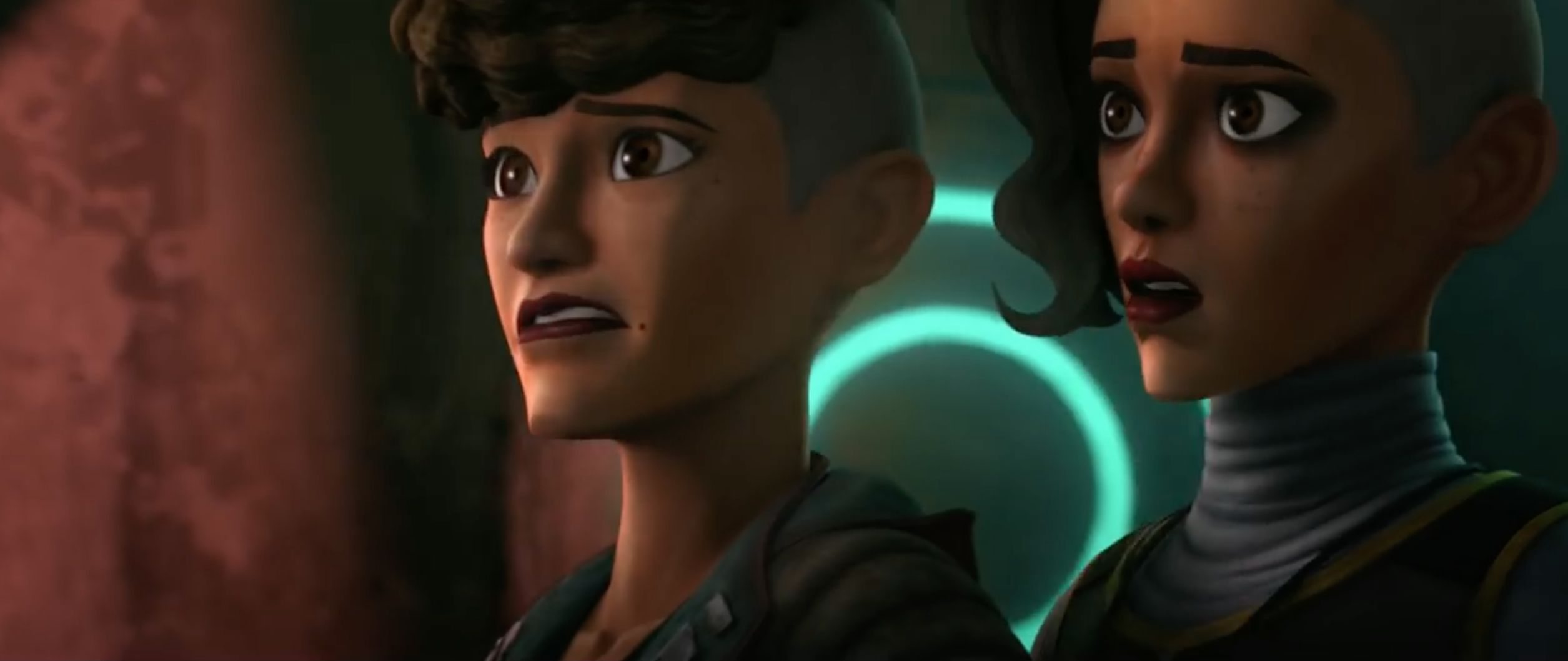Create a free profile to get unlimited access to exclusive videos, sweepstakes, and more!
The Clone Wars Rewind: The Martez sister arc was not filler, it was pivotal

Fans were hugely enthusiastic about the final arc of Star Wars: The Clone Wars, but many were less than thrilled with the arc that came before it. In between the tales of the Bad Batch and the Siege of Mandalore, the series gave us four episodes of Ahsoka Tano helping two sisters who reside in the lower depths of Coruscant. What many considered filler is anything but — these episodes are pivotal.
Now that the full picture has unfolded, we can see how important these episodes truly are. The appearance of Bo-Katan Kryze in the second two episodes of this arc definitely serves as a segue into how Ahsoka gets into the Mandalorian business, but that much is obvious. What the arc really does is show us how Ahsoka got from the end of “The Wrong Jedi” in Season 5 to “Old Friends, Not Forgotten” in Season 7. They open up Ahsoka’s mind to what is really going on in the galaxy, details that generally have nothing to do with the larger conflict. Her perspectives shift because of this arc, and her horizons are broadened.
In the penultimate episode of the series, Ahsoka tells Rex that she’s never really been trained as a Jedi. She became a Padawan during the war, so she was trained as a soldier more than anything else. That’s what the Jedi way was, or so she thought. Her experiences with Trace and Rafa Martez showed her what the Jedi are really supposed to be: They are meant to be selfless protectors, and they help "no matter what."
The Martez sisters themselves aren’t in love with the Jedi, and seeing this negative attitude from two regular citizens of the Republic makes sense in light of how the galaxy at large fully accepts the Jedi decimation in Star Wars: Revenge of the Sith. The sisters have experienced major collateral damage because of Jedi actions (that were brought on by criminals, so it’s not really fair, but whatever), and they do not hold them in high regard.
Their attitude toward the Jedi changes when they get to know Ahsoka, though, because Ahsoka acts as they thought a Jedi should act. She acts how we, the fans, always thought the Jedi in the prequels would act, instead of being the high-and-mighty, business-time-code-making, politically minded sticks in the mud that we are introduced to in the prequel trilogy.
This is something Ahsoka had never considered, and she brings this attitude with her into the final arc. She questions the Jedi, and not just because they put her on trial in Season 5. They have become political pawns, and she tosses this accusation at Obi-Wan Kenobi right in front of Anakin. It is something that would naturally stick in Anakin’s mind, and he’s going off on his own little journey right after this. Anakin now goes into the events of Revenge of the Sith with Ahsoka’s Jedi judgment on his mind, and that judgment is nurtured in the Martez arc.
Aside from all of that, there’s just no way you go from the Ahsoka of Season 5 right to the Ahsoka shown in the Siege of Mandalore. She's giving off lines that are as cold as ice there because she has seriously grown up. Four episodes spent protecting the very people that the Jedi are supposed be protecting allow this to happen. When watching both arcs back to back, Ahsoka's development is clear, and the finale hits harder because of it.
Perhaps the Martez episodes felt like filler because they were initially being watched one episode at a time, a week apart, and everyone just wanted to get to the jetpacks and lightsabers. It’s what made the show a different experience when it was first on the air, as opposed to being fully available for bingeing like it is now. An episode that might have been considered filler back then doesn’t register like that now — not when watching multiple episodes in a row.
The Siege of Mandalore and the end of the series was worth the wait, but it needed to be properly set up. Clone Wars' creators managed to do this while shedding some light on regular citizens of the galaxy, something that rarely happens in Star Wars stories. For all we know, a Martez descendant flies in on the Silver Angel as a part of Lando’s armada at the end of Star Wars: The Rise of Skywalker.
Forget the Jedi, the Clones, the soldiers, and Whorm Loathsom. What does a space laundromat-owning resident of level 1313 think about the war? Ahsoka finds out, and so do we. Everything in these four episodes makes the finale shine brighter and makes the Star Wars galaxy feel so much more alive.
Ultimately, if an episode of this show contributes to the growth of Ahsoka Tano, it is most certainly not filler. Also, Rafa Martez eats a space pear in one of these episodes (such as the one Anakin cuts up for Padme in Star Wars: Attack of the Clones), so come on. That's good stuff.


























